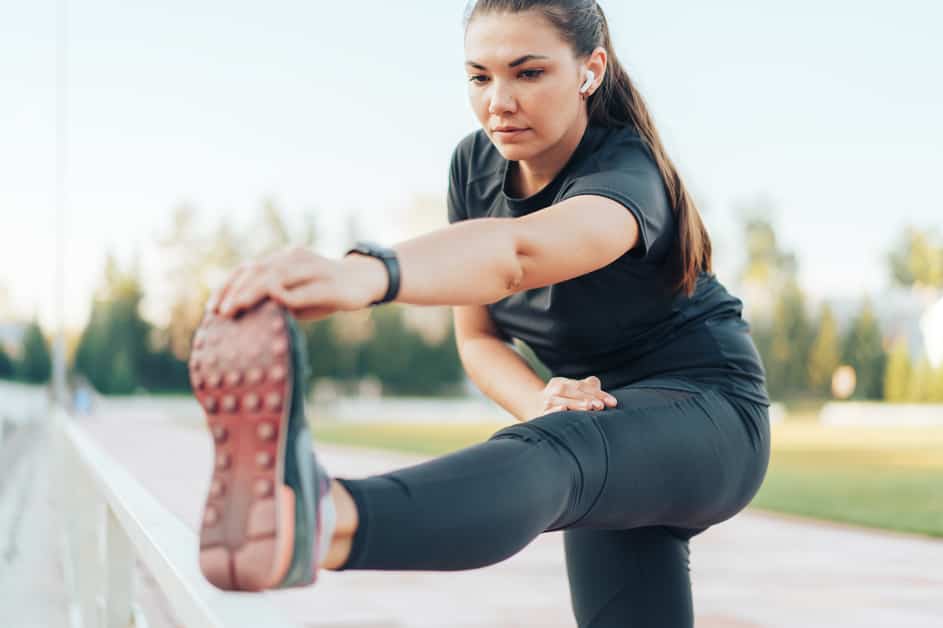Introduction
The knee is a complex joint, used in everyday tasks and activities. It can become worn and tear easily. Age-related conditions, such as arthritis or ligament wear, can increase the chance of knee pain. Physical therapy is a great option to manage the pain.
Physical therapy offers treatments to help with wear-and-tear related knee pain. Increasing the range of motion around the joint, improving joint stability and reducing inflammation are common mechanisms. Patients can learn techniques to protect their legs from further injury.
Physical Therapy includes:
- Strengthening programs for the muscles that support the joint.
- Modalities reduce inflammation in the area.
- Stretching exercises increase range of motion.
- Proper posture training minimizes strain on the knee.
Physical therapy restores muscle strength and reduces swelling. This can help with conditions like arthritis, or muscle tension caused by inappropriate posture. It can help with walking ability, and prevent pain when climbing stairs. Comprehensive physical therapy is recommended to manage knee pain caused by wear and tear, so mobility is restored and long-term consequences are prevented.
Types of Knee Pain
Knee pain: many causes. Identify yours to decide the best treatment. Physical therapy can help if it’s wear and tear. But there are other types too. Let’s examine them and see how PT can help.
Osteoarthritis
Osteoarthritis (OA) is the most common cause of knee pain. It affects over 10.8 million adults in the US over 45. This is due to the wear and tear on joint cartilage. Cartilage is the soft material that covers the ends of bones. It reduces friction and cushions movements.
Patients usually experience pain, stiffness, swelling, and limited motion around the joint. Physical therapy interventions help to reduce symptoms. This includes manual therapy, targeted exercises, stretching programs, and advice about weight management. Or use of assistive devices to reduce stress levels across the joint.
At MOVE PT + Rehabilitation in Seattle, Washington, physical therapists make personalized plans. This helps patients find relief in activities they once enjoyed. It also prevents or delays further progression or onset of symptoms related to OA or wear and tear pain related to the knee joint.
Meniscus tears
Meniscus tears, also known as “torn cartilage,” are a common cause of knee pain in adults. This tissue rubbery cushion sits between the thighbone and shinbone, providing stability and shock absorption to the knee joint. When it tears, it can cause sharp pains and reduced flexibility, and a clicking or popping sensation.
The most common type is a degenerative tear, caused by normal wear-and-tear over time. It often happens with a twist or bend to the knee. This can lead to pain and swelling. Surgery may be needed for extensive damage, but physical therapy can help with mild cases.
Physical therapy should be implemented soon after diagnosis. Rest and icing can help mild cases, but a qualified provider should closely monitor and design an individualized program. This depends on factors like age, activity level, and existing medical conditions.
Physical therapists can manage swelling with massage and release tight muscles. Exercises can restore range of motion and gradually strengthen core stability. This helps patients return to their usual activities without the fear of re-injury.
Patellofemoral Syndrome
Patellofemoral Syndrome, also known as Knee Tracking Disorder (KTD), is a common cause of knee pain from wear and tear. It is characterized by pain from the knee cap – patella – not tracking in its normal groove on the thigh bone – femur. This can happen when muscle groups above and below the kneecap are uneven in strength, tugging on the patella and causing misalignment and rubbing against cartilage in the joint.
Physical therapy is important to treat patellofemoral syndrome. Your physical therapist will assess posture, strength and movement patterns to figure out why there is pain and make a treatment plan.
Exercises to strengthen weak or ‘shut down’ muscles, stretching shortened muscles around the knee joint, manual therapy techniques, ultrasound and electrical stimulation, and laser therapy to speed up healing, are common treatments:
- Strengthening weak or ‘shut down’ muscles
- Stretching shortened muscles around the knee joint
- Manual therapy techniques
- Ultrasound and electrical stimulation
- Laser therapy to speed up healing
Physical Therapy Treatment Options
Physical therapy is a popular choice for managing knee pain from wear and tear. This type of pain can result from a sports injury, age-related damage, or a medical issue. Treatment often focuses on restoring the joint’s range of motion, strengthening leg muscles, and reducing pain.
Here, we will explore physical therapy treatment options for pain caused by wear and tear:
Stretching and Strengthening
Stretching and strengthening are key parts of physical therapy. Stretching helps reduce muscle tension and pain, and increases range of movement. Strengthening works to rebuild strength and stability in weak muscles. It also supports joints, improves movement control, and boosts daily task performance.
Physical therapists will suggest exercises for different muscles groups, like manual stretching, yoga, myofascial release, and resistance training. They might also use specialized machines like treadmills and recumbent bikes. When stretching is combined with a tailored strengthening program, it can lead to a quicker recovery. Plus, better movement quality is achieved.
Manual Therapy
Manual therapy is a term used to describe physical therapy techniques with hands-on manipulation of the body. It aims to improve mobility, restore range of motion, reduce pain, reduce swelling, relieve chronic inflammation and reduce muscle tension.
Common techniques include joint mobilization, massage, myofascial release, stretching and mobilization, and soft tissue mobilization and manipulation.
The goal of manual therapy is to provide not only temporary relief but also to teach patients proper body mechanics to prevent injury in the future. It is usually combined with other therapies such as electrophysical agents or exercises. Manual therapists are trained by medical doctors specialising in physical medicine and rehabilitation (PM&R). They have extensive training on how to do the therapies safely and effectively without causing further harm.
Therapeutic Exercises
Chiropractic and acupuncture may be recommended for knee pain. But physical therapists usually suggest therapeutic exercises as the first choice of treatment. They will begin by relieving your pain through exercises that make your muscles around the joint stronger and more flexible. Stretching can make your range of motion better. Strengthening builds muscles that give support to the knee joint.
Physical therapists may then advise certain exercises to reduce swelling and inflammation, fix any muscle imbalances, and help movements become more natural. Types of exercises they may recommend:
- Light walking, which takes stress off the kneecap while still strengthening the leg muscles.
- Stretching, to make overworked muscles relax.
- Strengthening exercises, to focus on particular areas of weakness, as well as general leg strength to reduce pressure on the knee joint.
- Aquatic therapy, which is low resistance with minimal strain on the body’s joints.
- Plyometrics or jump training to make the knee more agile and coordinated when walking or running.
Benefits of Physical Therapy
Physical therapy: A treat for knee pain! It can reduce inflammation, improve mobility and make life easier. Plus, it’s tailored to each individual. What are the benefits? Let’s take a peek!
- Reduces inflammation
- Improves mobility
- Tailored to each individual
Improved Mobility
Physical therapy can help improve the knee joint’s strength and mobility, making pain go away. A physical therapist will take a look at the knee pain and range of motion, then assess the patient’s ability to walk, stand up from chairs, or move from room to room. After analyzing the situation, the therapist will then talk about treatment options with the patient. This can involve stretching and strengthening exercises, as well as massage. The goal is to make pain go away and increase independence.
More advice from a physical therapist could include using devices such as crutches, walkers, or wheelchairs for better mobility when going outdoors or shopping. Certain activities may be avoided until the condition improves. A physical therapist can also teach correct body mechanics while doing activities like walking or climbing stairs, to lessen the strain on joints. Finally, exercises can be recommended to increase strength and stability, and reduce any wear and tear on the knee joint.
Reduced Pain
Physical therapy can give relief from the knee pain due to wear and tear. Strengthening muscles and changing forces on the joint can reduce pressure on the worn parts of the joint and cause less pain. Physical therapy can also help with range of motion and reduce inflammation from the damage.
Physical therapists can use many methods for reducing knee pain. These include:
- Manual treatments like massage and stretching to increase range of motion;
- Electric stimulation or ultrasound;
- Taping;
- Splints;
- Orthotics;
- Balance drills to reduce unsteadiness;
- Aquatic therapy to reduce gravity’s effect on the knee while exercising;
- Strength training;
- Gait retraining to improve biomechanics; and
- Non-steroidal anti-inflammatory medicines to reduce inflammation in soft tissue.
Therapists might also recommend aquatic exercises with flotation belts or boards. These lessen body weight but provide resistance against waves that cause muscle contractions. This helps people with serious knee problems manage their limited range of motion. It lets them do functional activities and strength training for the muscles that often weaken and cause more knee deterioration.
Movement coordination, mobility control, and muscular stability are important for successful therapy. This can improve lifestyle quality by giving less pain and more function when doing daily activities like working, playing sports, and managing home life.
Increased Strength
Physical therapy is important for improving knee strength and stability. This can help manage pain from wear and tear. Exercises can help build the muscles that support your knee. For osteoarthritis, exercises target muscles around the knee to make movement easier and reduce stress. Strengthening exercises can reduce the need for pain meds, which have their own downsides.
Physical therapists may suggest splints or supports to protect joints during activities that cause pain or stiffness. This can help you stay active without missing out due to too much pain or stiffness.
Conclusion
Physical therapy can help with knee pain and improve function. A therapist assesses mobility, strength and walking pattern. They will provide exercises to target weak muscles and improve body mechanics. Stretching improves joint flexibility. Modalities like heat, cold and electrical stimulation can reduce inflammation and relax tense muscles.
Physical therapist-guided exercises are an effective method. Other interventions may be included in the treatment plan. Seek out a medical professional for an appropriate diagnosis and treatment. Combining exercise and manual therapy can result in improved function and quality of life for those with knee issues.
Frequently Asked Questions
Q: What role does physical therapy play in managing knee pain caused by wear and tear?
A: Physical therapy can help manage knee pain caused by wear and tear by strengthening the muscles around the knee, increasing range of motion, decreasing swelling and inflammation, and improving overall joint stability.
Q: What kind of exercises are used in physical therapy for knee pain?
A: Exercises used in physical therapy for knee pain include range of motion exercises, strengthening exercises, and balance and proprioception exercises. Additionally, stretching, manual therapy, and gait training may be utilized.
Q: How long does it typically take for physical therapy to reduce knee pain?
A: The amount of time it takes for physical therapy to reduce knee pain depends on the severity of the issue, the amount of treatment that is needed, and the patient’s response to treatment. Generally, improvements will begin to be seen after several sessions.




